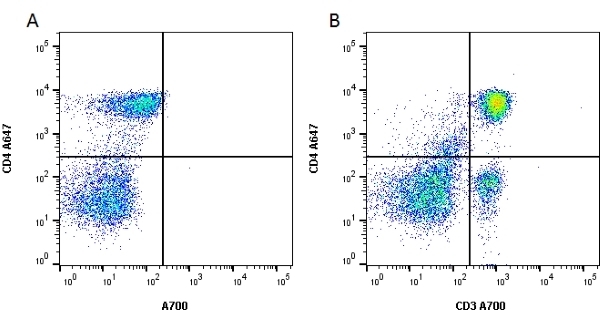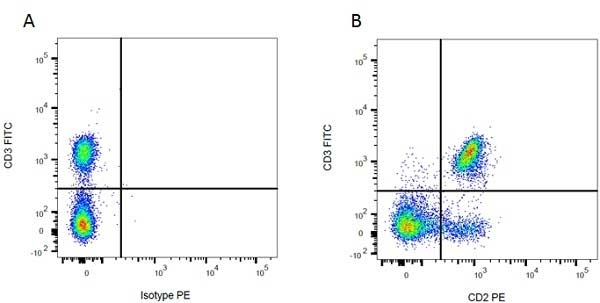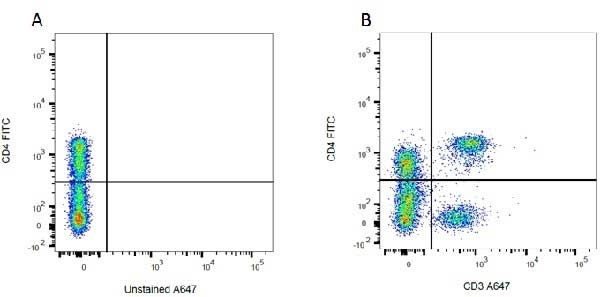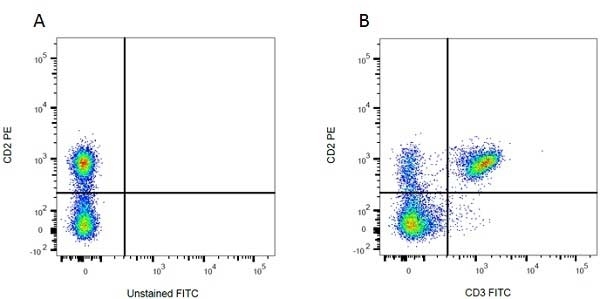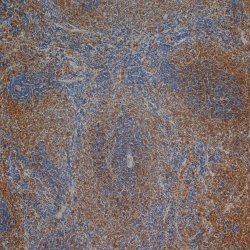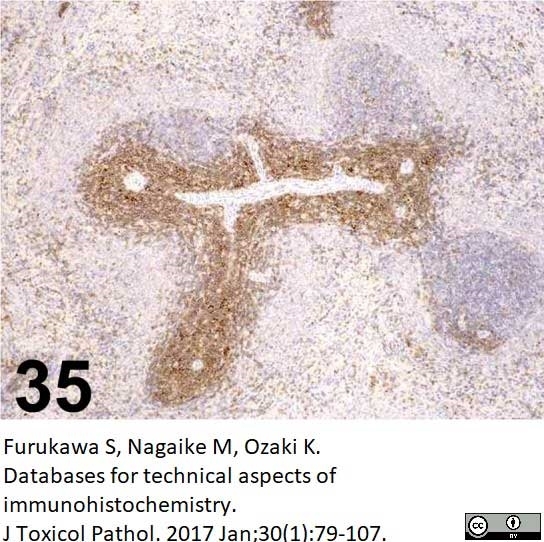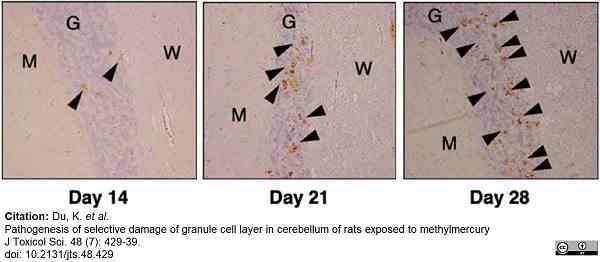CD3 antibody | 1F4









Mouse anti Rat CD3
- Product Type
- Monoclonal Antibody
- Clone
- 1F4
- Isotype
- IgM
- Specificity
- CD3
| Mouse anti Rat CD3 antibody, clone 1F4 recognizes rat CD3, a ~25 kDa antigen which is found on rat T-cells. Mouse anti Rat CD3, clone 1F4 does not react with rat B cells. In immunohistology it stains rat thymus tissues strongly in the medulla and weakly in the cortex. Functionally the addition of the antibody to a culture of rat T cells induces the proliferation of T-cells in the presence of PMA. |
- Target Species
- Rat
- Product Form
- Purified IgM - liquid
- Preparation
- MCA772: Purified IgM prepared by ammonium sulphate precipitation from tissue culture supernatant
- MCA772GA: Purified IgM prepared by ammonium sulphate precipitation from tissue culture supernatant.
- Buffer Solution
- Phosphate buffered saline
- Preservative Stabilisers
0.09% Sodium Azide - Immunogen
- F344 rat T cells stimulated with PMA (TPA) and calcium ionophore
- Approx. Protein Concentrations
- MCA772: IgM concentration 1.0 mg/ml
- MCA772GA: IgM concentration 1 mg/ml
- Fusion Partners
- Spleen cells from immunized BALB/c mice were fused with cells of the P3-X63-Ag8.653 mouse myeloma cell line.
- Regulatory
- For research purposes only
- Guarantee
- 12 months from date of despatch
Avoid repeated freezing and thawing as this may denature the antibody. Storage in frost-free freezers is not recommended.
| Application Name | Verified | Min Dilution | Max Dilution |
|---|---|---|---|
| Flow Cytometry | 1/10 | 1/25 | |
| Immunohistology - Frozen | 1/10 | 1/25 | |
| Immunohistology - Paraffin 1 | 1/10 | ||
| Immunoprecipitation |
- 1 This clone is suitable for use on paraffin embedded material using target unmasking fluid HIS003B, refer to McKechnie N.M. et al. for details.
- Flow Cytometry
- Use 10ul of the suggested working dilution to label 106 cells in 100ul.
| Description | Product Code | Applications | Pack Size | List Price | Your Price | Quantity | |
|---|---|---|---|---|---|---|---|
| Goat anti Mouse IgM:HRP | 102005 | C E IB | 1 ml |
|
Log in | ||
| List Price | Your Price | ||||||
|
|
Log in | ||||||
| Description | Goat anti Mouse IgM:HRP | ||||||
| Goat anti Mouse IgM:Alk. Phos.(Human Adsorbed) | STAR138A | C E P WB | 1 ml |
|
Log in | ||
| List Price | Your Price | ||||||
|
|
Log in | ||||||
| Description | Goat anti Mouse IgM:Alk. Phos.(Human Adsorbed) | ||||||
Source Reference
-
Tanaka, T. et al. (1989) Characterization of a CD3-like rat T cell surface antigen recognized by a monoclonal antibody.
J Immunol. 142 (8): 2791-5.
References for CD3 antibody
-
Nicolls, M.G. et al. (1992) Induction of long-term specific tolerance to allografts in rats by therapy with an anti-CD3-like monoclonal antibody.
Transplantation 55: 459-68. -
McKechnie NM et al. (1997) Immunization with the cross-reactive antigens Ov39 from Onchocerca volvulus and hr44 from human retinal tissue induces ocular pathology and activates retinal microglia.
J Infect Dis. 176 (5): 1334-43. -
Candolfi, M. et al. (2007) Intracranial glioblastoma models in preclinical neuro-oncology: neuropathological characterization and tumor progression.
J Neurooncol. 85: 133-48. -
Lohwasser, C. et al. (2009) Role of the receptor for advanced glycation end products in hepatic fibrosis.
World J Gastroenterol. 15: 5789-98. -
Sanchez-Guajardo, V. et al. (2010) Microglia acquire distinct activation profiles depending on the degree of alpha-synuclein neuropathology in a rAAV based model of Parkinson's disease.
PLoS One. 5: e8784. -
Beck, K.D. et al (2010) Quantitative analysis of cellular inflammation after traumatic spinal cord injury: evidence for a multiphasic inflammatory response in the acute to chronic environment.
Brain. 133: 433-47. -
Echeverry, S. et al. (2011) Peripheral Nerve Injury Alters Blood-Spinal Cord Barrier Functional and Molecular Integrity through a Selective Inflammatory Pathway.
J Neurosci. 31: 10819-28. -
Takahashi, Y. et al. (2017) Rituximab protects podocytes and exerts anti-proteinuric effects in rat adriamycin-induced nephropathy independent of B-lymphocytes.
Nephrology (Carlton). 22 (1): 49-57.
View The Latest Product References
-
Sun, J. et al. (2017) Pentapeptide PLNPK ameliorates adjuvant arthritis and inhibits T cell activation by suppressing Lck and PI3K activities
Int J Clin Exp Pathol 10(5): 5252-62. -
Du, K. et al. (2023) Pathogenesis of selective damage of granule cell layer in cerebellum of rats exposed to methylmercury
J Toxicolog Sci. 48 (7): 429-39.
- RRID
- AB_321258
- UniProt
- P19377
- Q64159
- Entrez Gene
- Cd3d
- Cd3g
- GO Terms
- GO:0016021 integral to membrane
- GO:0004888 transmembrane receptor activity
- GO:0007166 cell surface receptor linked signaling pathway
- GO:0045059 positive thymic T cell selection
- GO:0007163 establishment or maintenance of cell polarity
- GO:0015031 protein transport
- GO:0042981 regulation of apoptosis
- GO:0046982 protein heterodimerization activity
MCA772
MCA772GA
If you cannot find the batch/lot you are looking for please contact our technical support team for assistance.
Please Note: All Products are "FOR RESEARCH PURPOSES ONLY"
View all Anti-Rat ProductsAlways be the first to know.
When we launch new products and resources to help you achieve more in the lab.
Yes, sign me up
